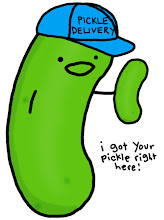Today, our class was given a brief presentation on what we have to do for our final assignment.
Apparently, it was a service and I think we have to put a lot of effort to accomplish this task.
TASK : 1. Reaching out to the target audience with limited budget ;
2. Educating the public with limited resources.
To me it is a little bit tough as the budget is limited.
Even she has mentioned that WOM a.k.a Word Of Mouth is the most effective way, but then to inform public about this particular service, the media is quite essential as well.
Meantime, I still have no idea what to do for the service as I am sure it will take sometime to think.
READING BOOK TODAY:
WEEK 6
ENGAGING WITH THE MEDIA
Do you know that mass media is very useful and important to the public relations practitioners?
The mass media is very important is because the reach, the believability and the timeliness, even sometimes the information can be a little too much.
The mass media like televisions, radios, newspapers, magazines and newsletters can reach the maximum number of audiences within short time.
Yet, if you want to work with the media, you have to take a note that you should not provide too much information to the journalists or whoever person you work with.
It is important to explore theories that can be applied to your work with the media.
One of the theories that can be applied is framing theory (Tversky&Khaneman 1981) explains that the way something is presented influences how the audience perceives the topic.
Framing is where we write a news in a way that we want people to perceive it.
Framing is a natural part of human communication, even in our daily life, you will unconsciously frame your story to your friends.
It is true that framing sometimes can be a bit bias in a way how people tell the story.
Public relations media releases frame events in ways favourable to the organization and public, as the practitioners frame the story to meet the journalist’s criteria of news.
Yet, not all pieces of news will be chosen and used by the media gatekeepers.
The media gatekeepers are the editors, directors of news, or chiefs of staff who select from among what is an offer—media releases, news tips, letters, emails, web diaries, or blogs—for stories that appeal (Chia&Synnott, 2009).
The gatekeeper is the one who will make a decision on whether to accept or reject your story based on criteria.
Hence, it is important to concern more on the news values such as :
Truth: Public expects the trustworthy news from the journalist, so, if whoever journalist withhold the true information to himself, he would become a hostile.
Timeliness: Public expect to know the updated news instead of the outdated one or even the news that other media has already published. Do you expect to read the 31st December 2009 news when you actually already in year 2010?
Proximity: The further away from the medium’s coverage area an event is, the more earth-shattering and unusual it has to be to make the news (Chia&Synnott, 2009).
Conflict: Journalists and public have been implanted the taught that conflict makes the news more interesting.
Eminence and prominence: Public relations and media relations practitioners aim to boost coverage of a product launch or building opening, for example, through celebrity involvement (Chia&Synnott, 2009).
Consequence and impact: The journalist should produce a news which affects public in the region where it occurs, as people will never read your news if it does not even relate to them, won’t they?
The unusual or remarkable: Any piece of story that is distinctive, it can be your company, product or even a service.
So, it is essential to get the news values before you start off writing it to prevent your news being rejected.
Besides, it is also important that we are to build good relationships with journalists and editors.
It would be easier for us to get the news being published on the paper.
Get to know the journalists who report on areas your organization is interested in (Chia&Synnott, 2009).
Always meet your deadlines.
Have up-to-date databases.
Know how newsrooms are organized.
Develop a media strategy.
Know what is news and what is not.
To be a good public relations practitioner, we have to have the skill of writing a good media release to attract the media attention as well.
Keep your release clear and concise.
Most important news first
Background last; the editor should be able to identify the major points of the release by reading the lead or first sentence (Chia&Synnott, 2009).
Lastly, you know that the tools for effective media relationships are diverse; you need good media releases, photos that add to the story and punchy headlines (Chia&Synnott, 2009).


No comments:
Post a Comment